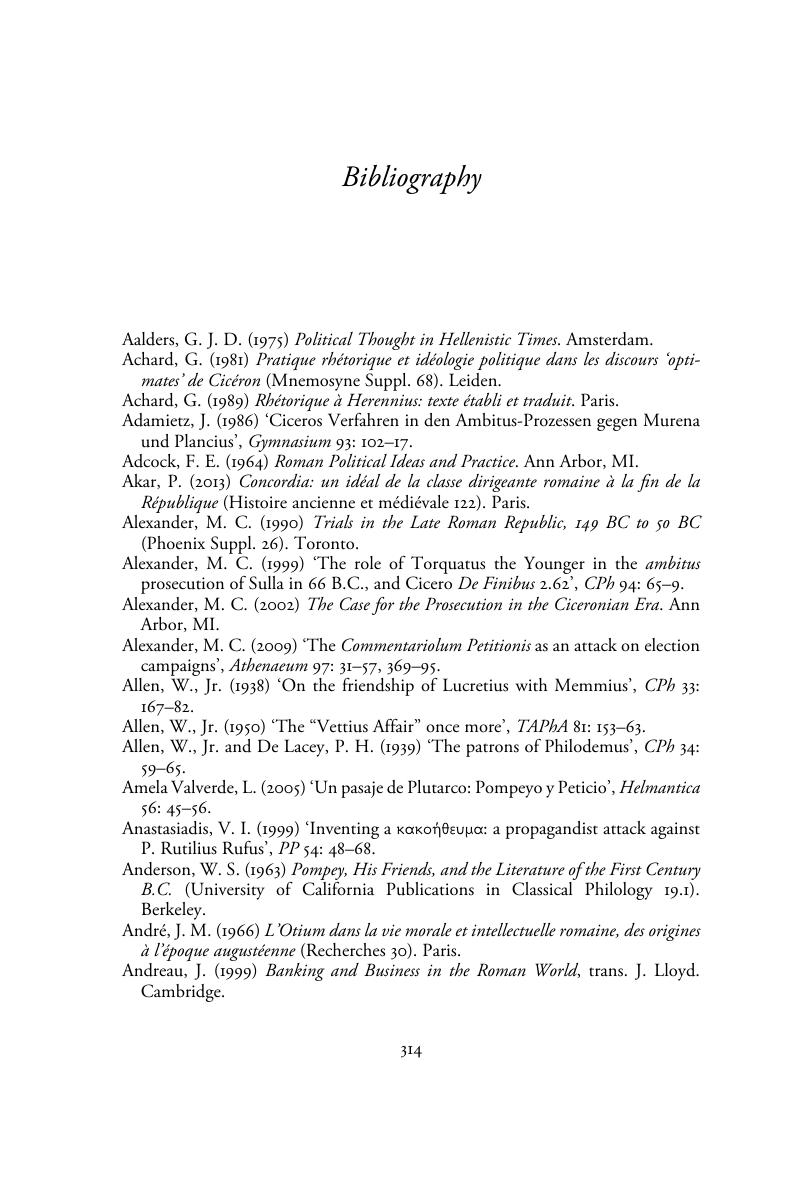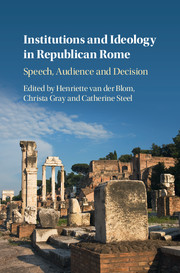Book contents
- Institutions and Ideology in Republican Rome
- Institutions and Ideology in Republican Rome
- Copyright page
- Dedication
- Contents
- Contributors
- Acknowledgements
- Abbreviations
- Introduction
- Part I Modes of Political Communication
- Part II Political Alliances
- Part III Institutions in Theory and Practice
- Part IV Memory and Reputation
- Bibliography
- Index
- References
Bibliography
Published online by Cambridge University Press: 08 May 2018
- Institutions and Ideology in Republican Rome
- Institutions and Ideology in Republican Rome
- Copyright page
- Dedication
- Contents
- Contributors
- Acknowledgements
- Abbreviations
- Introduction
- Part I Modes of Political Communication
- Part II Political Alliances
- Part III Institutions in Theory and Practice
- Part IV Memory and Reputation
- Bibliography
- Index
- References
Summary

- Type
- Chapter
- Information
- Institutions and Ideology in Republican RomeSpeech, Audience and Decision, pp. 314 - 344Publisher: Cambridge University PressPrint publication year: 2018



